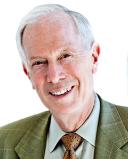SSRIs
Are Antidepressants Effective?
A look into the various treatments available for depression.
Posted August 7, 2014
One prays that they are, so many people are on them and so much, in terms of personal happiness, is riding on the effectiveness of the two dozen or so drugs now marketed as “antidepressants.” According to the National Center for Health statistics, 11 percent of all Americans over 12 took antidepressants – and 25 percent of women aged 40-59.1
So if antidepressants aren’t effective, a lot of people are going to be asking for their money back. The problem is that they may not be very effective. An important recent article in Psychiatric Times, by Steve Balt, a psychiatrist at John Muir Behavioral Health in Concord, California and editor of the Carlat Psychiatry Report, says just that. Based on a comprehensive review (“meta-analysis”) of the literature, Balt says, “Data appear to confirm 2 stark truths about antidepressants. First, there seem to be no significant differences among them . . . Second, and somewhat surprisingly, antidepressant effectiveness is quite low.”2
This report is so negative as to verge on a council of despair. Yet Balt does not get into two issues, and it is these that give us hope. First, there are clearly different kinds of depression, although the Diagnostic and Statistical Manual of the American Psychiatric Association, currently in its fifth edition (“DSM-5”), admits only one: “major depression.” Yet for decades critical spirits in psychiatry have been insisting that there is no such thing as a single entity called major depression. Depression comes in several formats, which are responsive to different treatments:
- There is melancholic depression, once called simply “melancholia,” that is characterized mainly by sadness, then by the lack of any hope or joy in life, by slowed thinking, slowed movement, and extensive and unwelcome bodily changes. (There is also an anxious version with somewhat different symptoms.) Melancholia has been known since the Ancients. Then, after around 1900 psychiatry unaccountably lost track of it. The Balt piece says nothing about melancholia.3
- There is less serious, but still subjectively unbearable, “community depression,” not necessarily sadness at all but a mixture of anxiety, fatigue, discouragement, and somatic symptoms. It’s unpleasant as illness but you are not as much at risk of killing yourself as with melancholia.
- Some researchers have identified “atypical depression,” in which, unlike melancholia or community depression, you eat and sleep a lot, and are very sensitive to rejection (as opposed to being indifferent to the environment and wishing everyone would go away).
These depressions have different treatments: For melancholia, an older class of antidepressant drugs that Balt doesn’t even mention called the “tricyclic antidepressants” (TCAs, after their chemical structure) is indicated. Also, electroconvulsive treatment. For community depression, the Prozac-style antidepressants often do good service, but they are not for patients who are suicidal. The benzodiazepines, or Valium-style drugs, are also effective here.4 For atypical depression, a class of medications that have languished in semi-forgetfulness called the “MAOIs,” or monoamine oxidase inhibitors, is still remembered fondly by older clinicians.
Exercise therapy is just as effective as Prozac in community depression. Psychotherapy can work wonders.
So there are solutions! It’s not a counsel of despair after all. Yet a big problem with contemporary psychiatry is that most of these things have been forgotten. Few clinicians are knowledgeable about the distinction between melancholia and non-melancholia. What they know is “major depression” because that’s what they learned during their training.
In Europe, the TCAs and MAOIs are still familiar concepts because the Europeans – especially the Scandinavians and the Germans -- have hung onto classical psychiatry much more tightly than the Americans, who have been seduced by neurotransmitters and pharma merchandising.
Balt has done us a service in deflating the hype around “antidepressants,” as though they were some huge treatment advance. (They represent a loss of knowledge rather than a gain.) But the field as a whole needs to widen its vision. Patients trust their doctors to be well informed.
References:
- Edward Shorter, How Everyone Became Depressed: the Rise and Fall of the Nervous Breakdown, Oxford, 2013, 172.
- Steve Balt, “Assessing and enhancing the effectiveness of antidepressants,” Psychiatric Times, June 13, 2014.
- Michael Alan Taylor and Max Fink, Melancholia: The Diagnosis, Pathophysiology, and Treatment of Depressive Illness, Cambridge, 2006.
- Frederick Petty et al., “Benzodiazepines as antidepressants,” Biological Psychiatry, 38, (1995) , 578-591


